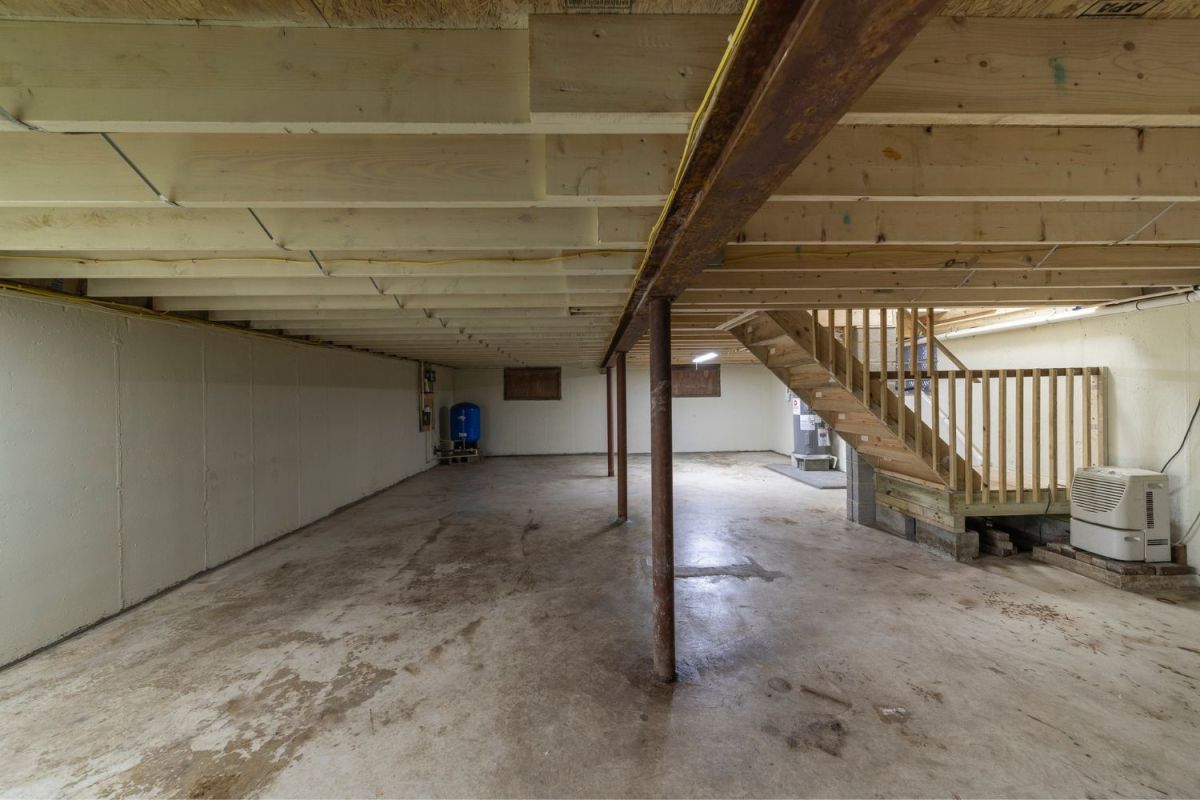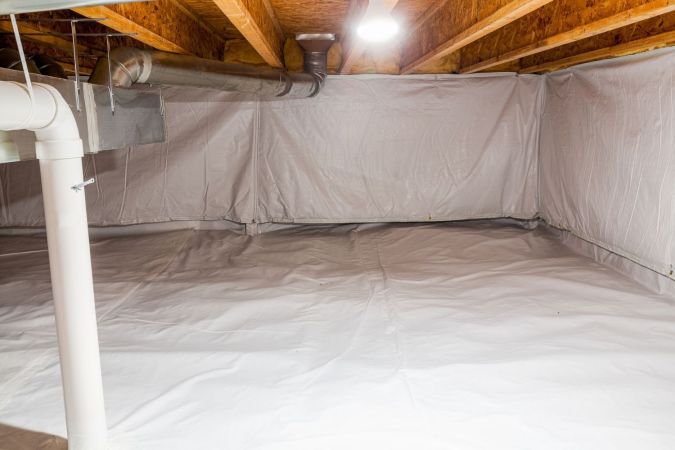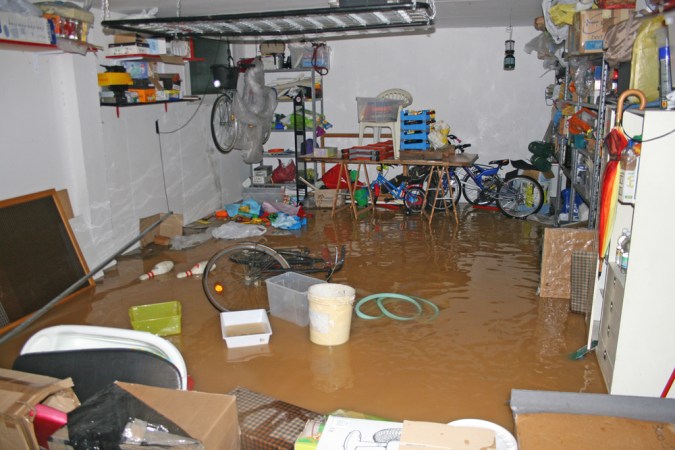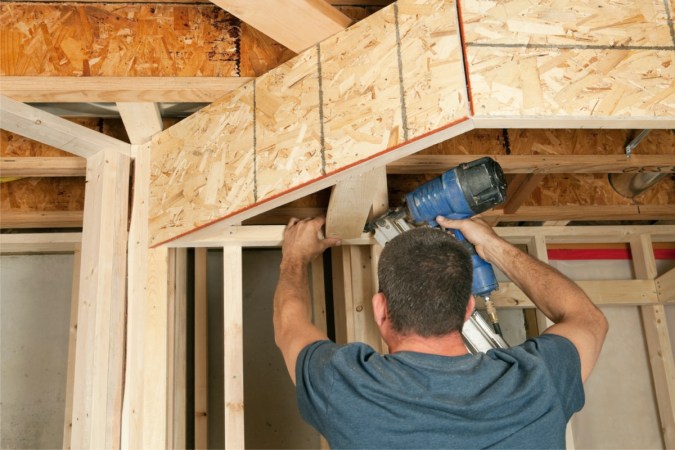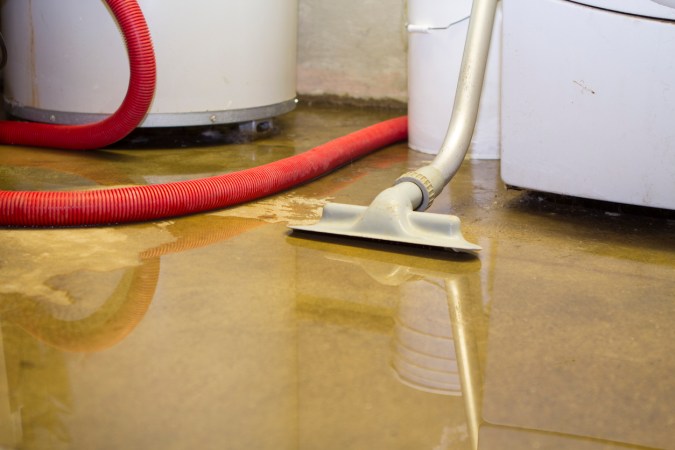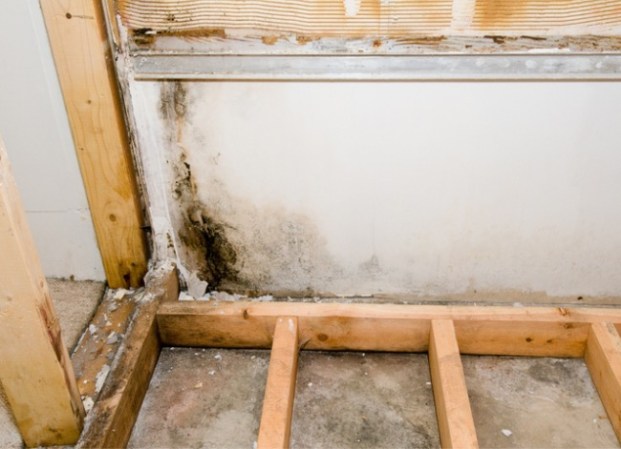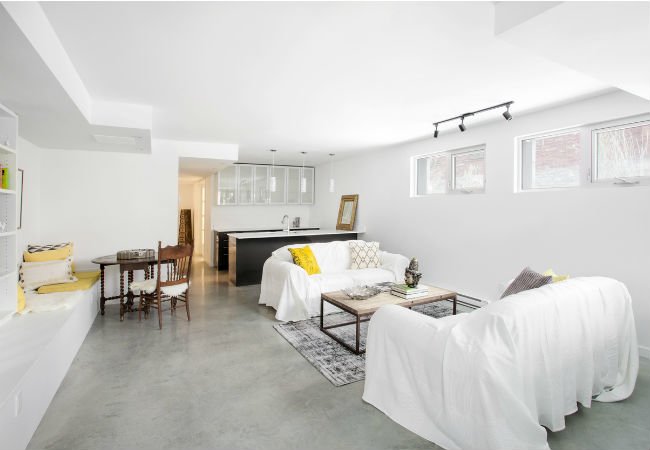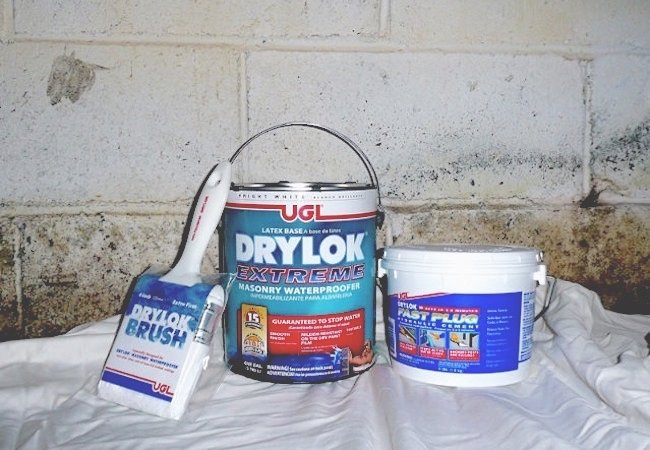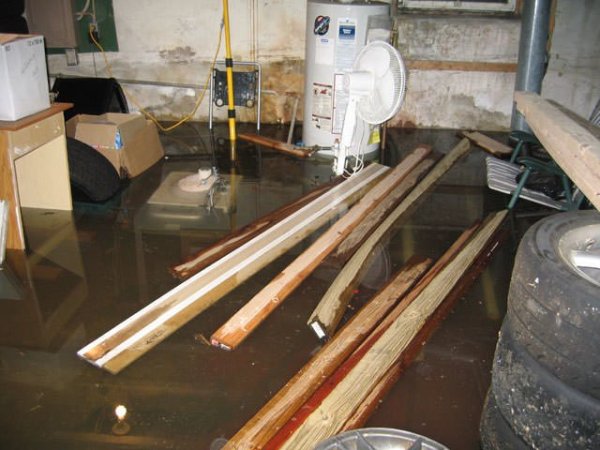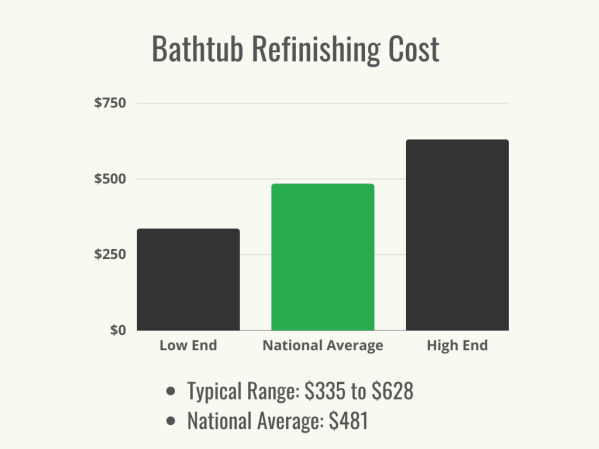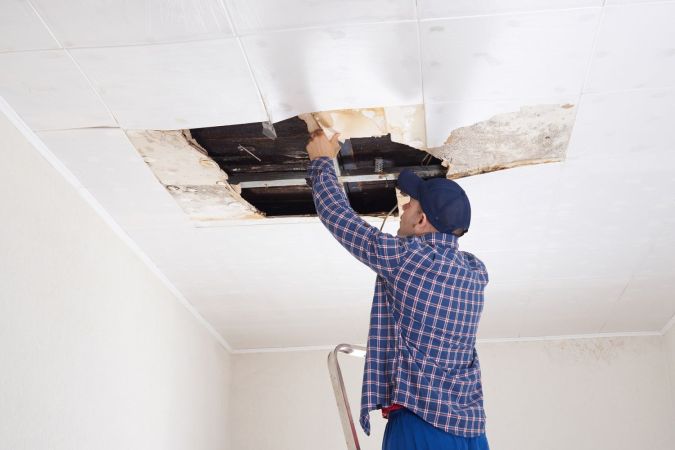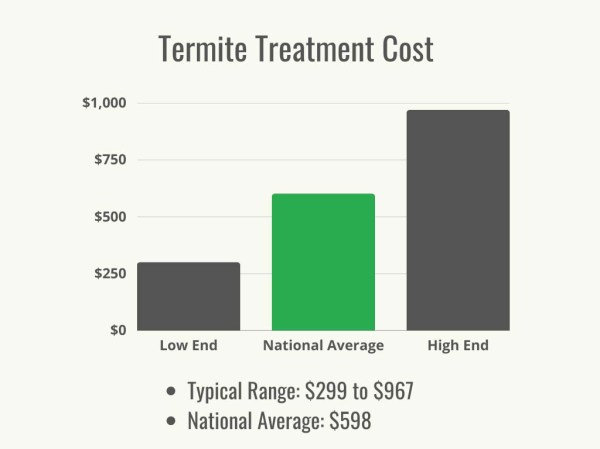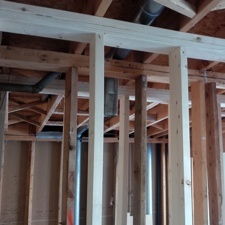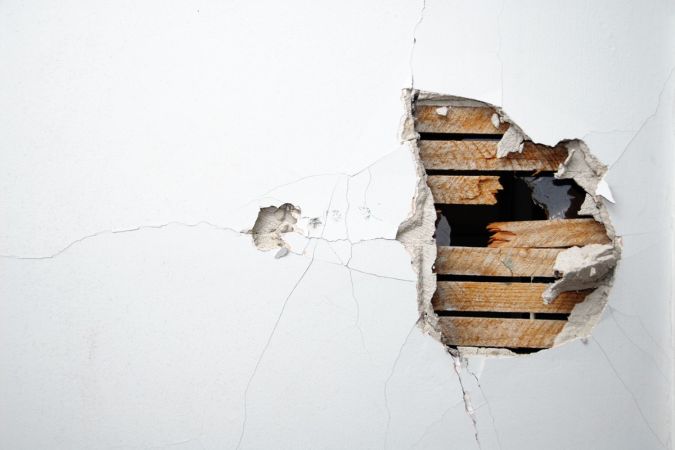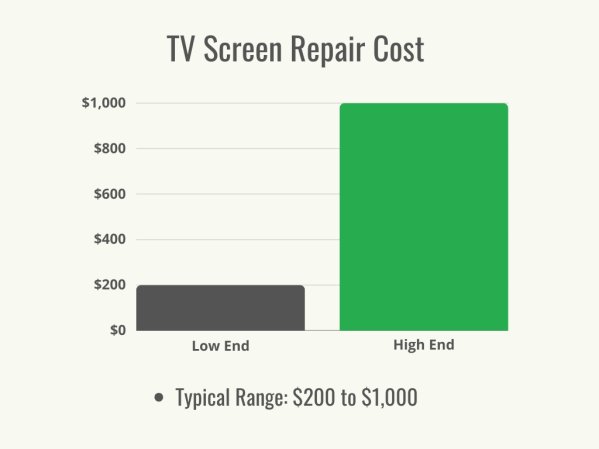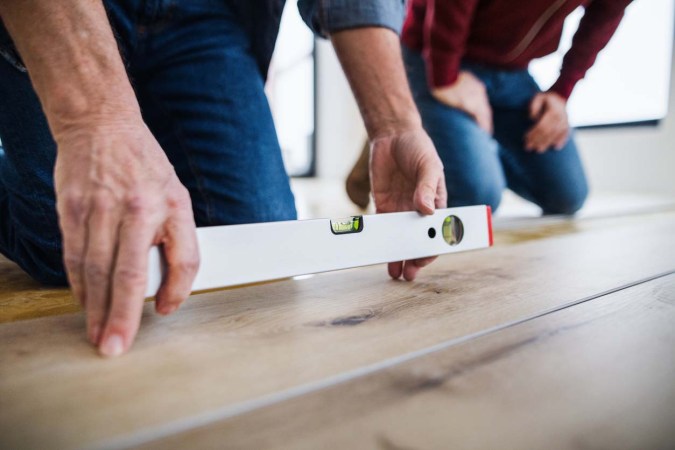We may earn revenue from the products available on this page and participate in affiliate programs. Learn More ›
Highlights
- The typical cost range to repair a bowing basement wall runs from $350 to $10,000, while the national average cost is $4,500.
- Some of the main factors that affect the cost of bowing basement wall repair include the type of repair; the extent of the damage; the size, condition, and accessibility of the wall; the cost of labor; and the cost of a structural engineer report.
- There are several signs that a home needs bowing basement wall repair, including stair-step or horizontal cracks, corner cracks, bulging or curving, tilting, and leaking.
- While there are some DIY basement projects a homeowner can attempt, bowing basement wall repair is not one of them. Improper reinforcement could lead to severe structural damage and put the safety of the home’s residents at risk.
A bowing foundation wall is never a good sign. If a homeowner sees a slight bowing in a wall, it’s important for them to take swift action. Repairing a bowing basement wall before it becomes a significant problem can help keep repair costs down. When a basement wall curves into the house by several inches or has numerous cracks, repairs will cost much more and take longer to complete. According to Angi, the average bowing basement wall repair cost is $4,500, with a typical range of $350 to $10,000.
The biggest cost factor for a bowed foundation wall is the type of repair recommended by a general contractor or structural engineer. Different basement wall reinforcement methods are designed to accommodate the severity of the bowing wall and the accessibility the contractor has to the foundation to repair it. Wall anchors, helical tiebacks, and reinforced straps are some of the most common repair options, and each comes with various associated costs.
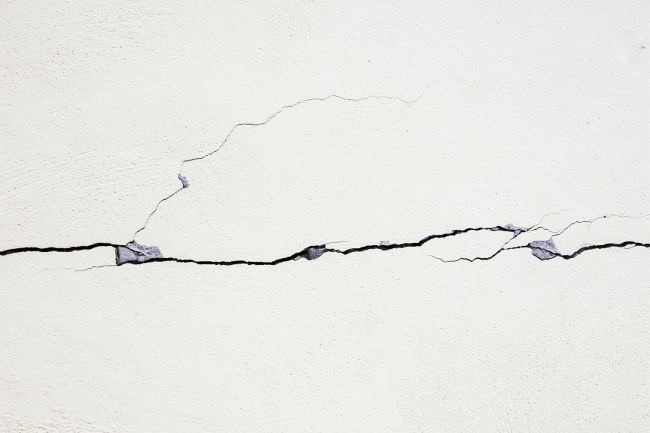
Factors in Calculating Bowing Basement Wall Repair Cost
Repairing bowed basement walls is no easy task, and there are numerous factors to consider when homeowners are budgeting for this important project. The average cost of bowing basement wall repair is $4,500, and much of that consists of factors like a structural engineer report, the type of repair, the extent of damage, wall size and condition, and current labor rates.
The list may seem intensive, but for a critical structural piece of the home, it’s important for homeowners to know how many factors go into repairing a bowed wall. These factors can also highlight the need for homeowners to act quickly on repairing a bowed basement wall.
Structural Engineer Report
The value of a structural engineer report can’t be underestimated. Contrary to some beliefs, structural engineers offer an unbiased opinion about the recommended repair, since they aren’t responsible for the actual repairs. They use their expertise to evaluate the safest repair method and often will suggest multiple solutions when possible.
Most reports will cost between $250 and $500, but it’s money well spent. Homeowners can feel more confident about what they need from a general contractor as they ask for repair quotes. In some cases, local municipalities require a structural engineer to provide a report as part of the permitting process to repair the foundation. This helps ensure that the repairs are done to code so homeowners can worry less about the condition of their foundation.
Repair Type
There are a handful of bowed basement wall repair methods that may be recommended. Some are better suited for minor bowing than others, but all of them can help repair and reinforce the majority of bowed foundation walls. If the damage is too extensive, then a contractor will probably suggest a full foundation replacement.
Helical Tiebacks
- Best for severely bowed basement walls
- Shafts are mechanically “screwed” into the ground at an angle from inside the walls
- No excavation required
- Placed every 5 feet
- $1,500 to $1,800 each
Steel or carbon fiber reinforcement straps
- Carbon fiber straps are suitable for walls with minimal bowing of 2 inches or less
- Steel straps are ideal for more significant bowing but cost more than carbon fiber
- No excavation required
- Placed every 4 feet
- $350 to $1,000 each
Wall anchors
- Best suited for walls that bow more than 2 inches
- Excavation 10 feet beyond the wall required to anchor into the ground
- Placed every 5 feet
- Made of steel
- $400 to $700 each
Wall straightening
- Brings the wall back into a straight line as opposed to other methods that may not
- Soil is removed from the outside of the wall before hydraulic jacks push the wall back into alignment
- Excavation required
- Steel or carbon fiber straps may be used to strengthen the wall against future bowing
- $250 to $300 per foot
Damage Extent
Wall bracing costs vary significantly depending on the extent of the damage. That’s why it’s recommended that homeowners act quickly at the first sign of a bowing wall in the basement. A bowing or deflection of 2 inches or less is the easiest and cheapest to repair. For bowing measuring 2 to 4 inches, repairs are still possible using techniques like installing wall anchors or helical tiebacks.
Unfortunately, there are times when a foundation wall is too cracked or bowed to be repaired. In this case, the opinion of a structural engineer and general contractor is necessary to determine the safest course of action for the home and its residents.
Wall Size, Condition, and Accessibility
Several factors relating to the wall and property influence bowing basement wall repair costs. The first is the length of the bowing wall. A 20-foot wall will require four to five reinforcement straps, wall anchors, or helical tiebacks, while a 10-foot wall may need only a couple of each. Most of the bowed basement wall repair options are priced by unit, so the more anchors or straps the wall needs, the higher the repair cost.
A severely damaged wall will need the most attention and the most costly solutions. Some walls will not be safely reinforced if the more cost-effective straps are used. When the structural integrity of a bowed or cracked basement wall is too extreme, repair methods that drill into the wall could end up causing more damage rather than reinforcing the wall. These cases will require more significant repairs or full replacement of the foundation.
If wall anchors are being put in, excavation may be needed. If excavation is recommended, then homeowners will need to ensure there is adequate access to dig the trench. This could mean some landscaping may need to be replaced after the job is done.
A worst-case scenario would be if the needed 10 feet of space crosses a property line or sits under a concrete patio. Any similar conditions that affect accessibility to the wall will typically cost a homeowner more, so it’s helpful to have a structural engineer provide as many viable repair options as possible.
Labor
Repairing a significantly bowed basement wall is no easy task, but foundation repair professionals have the expertise and time to get the job done. Bowing basement wall repair costs don’t usually include a separate line item for hourly labor. Most jobs have labor included in the price per piece (anchors or straps). There may be some exceptions when contractors are hired to straighten the wall or when excavation is required. Homeowners can verify local labor rates and determine whether they’re bundled in the per-piece cost when asking for quotes to repair their basement walls.
Additional Costs and Considerations
While several factors will affect nearly every homeowner planning a basement wall repair project, there are additional costs and considerations that apply only to certain situations. Some repairs may require permits, while others may not. Further, structural repairs can quickly increase the cost of repairing a bowed wall, and it’s often recommended that homeowners take care of water damage at the same time. Depending on the cause of the damage, homeowners may need to install better drainage systems too. Finally, most types of repairs will require some drywall replacement and a fresh coat of paint to make the basement wall look like new.
Permits
When it comes to projects that affect the overall safety of a house, permits are usually required by local municipalities. In most cases, foundation repair work will require a permit. For severe damage, it’s likely that soil testing, site plans, and a structural engineer’s report will be required before the project can begin. These costs can quickly add up, but they will pay off by ensuring the repairs will keep the home’s occupants safe with a strong foundation. The additional cost of permits, tests, or reports could average between $100 and $2,000.
Structural Repairs
Most basement walls begin to bow due to the pressure of soil and water pushing against the foundation. Others may bow and crack due to a natural disaster such as an earthquake or extreme flooding. In the worst-case scenarios, including a long-neglected bowing wall, it’s likely that structural damage exists.
Structural repairs can start at $1,000 but run into the tens of thousands of dollars in some cases. A general contractor and structural engineer will need to inspect joists, floors, and walls to determine the extent of the damage. Repairing structural damage is vital to preventing a bowed wall repair from failing within a short period.
Water Damage Repairs
Water is often the source of foundation problems thanks to its insipid way of finding and expanding any flaw in poured concrete. That, along with the pressure of soil, can cause a foundation wall to bow into the home. If a crack appears, water will continue to seep in and expand the crack when it freezes. It can also become the source of toxic, hidden mold growth and wood rot. Any issues caused by water must be resolved before the repair process can include insulating basement walls. If mold is present, it’s recommended that homeowners use one of the best mold removal companies, such as ServiceMaster Restore or ServPro, to properly remediate the toxic problem.
Homeowners are advised to ask the contractor about repairing water damage regardless of the type of repair method. Installing carbon fiber straps for basement walls is not going to fix a cracked wall. And if significant repairs are needed, it’s also wise for homeowners to ask about tips for waterproofing basement walls and sealing the concrete. Repairing a cracked foundation wall typically costs $250 to $800, but a foundation that leaks considerably may need additional repairs, costing around $2,300 to $7,300.
Drainage Installation
Homeowners who experience obvious leaks that don’t stop in their basement walls will want to consider having a new drainage system installed. A flooded basement is a significant issue to deal with. A structural engineer can include recommendations for drainage in their report when evaluating the home. So that homeowners can determine the best location for the drainage system installation, soil testing will be required, for an additional cost. Installing the actual drainage system averages between $25 and $100 per linear foot. The final price is dependent on ease of access, the distance of the drainage system from the house, and the system size required.
Drywall Replacement and Painting
A bowed basement wall that’s been repaired will need replacement drywall and fresh paint. The anchors or helical tiebacks will have been drilled into the walls, leaving unsightly mechanical components visible. Some companies will include the cost of drywall and repainting in their quote, but homeowners are encouraged to ask ahead of time. Drywall installation usually costs around $1.50 to $3 per square foot. Painting typically costs more: $2 to $6 per square foot.
Types of Bowing Basement Wall Repairs
The severity of the bowed wall is the primary factor that determines which type of repair a contractor or structural engineer will recommend. Some repair options, such carbon fiber straps, are suitable for minor bowing, while others are ideal for serious repairs and future stability.
“Bowing or cracked basement walls are typically repaired by using a wall anchor or carbon fiber reinforcement solution,” explains Tim Tracy, sales trainer at nationwide foundation repair company Groundworks. “Depending on the severity and the structure of the home, a foundation repair professional can decide which solution works best. Both will permanently stabilize your problematic foundation walls, but wall anchors may be able to straighten the walls back to their original position over time. These solutions are very serious and should be dealt with as soon as possible.”
| Type of Bowing Basement Wall Repair | Average Cost Range (Materials and Labor for a 20-foot Wall) |
| Helical tiebacks | $6,000 to $7,200 |
| Steel or carbon fiber straps | $1,700 to $5,000 |
| Wall anchors | $1,600 to $2,800 |
| Wall straightening | $340 to $550 per square foot |
Helical Tiebacks
The most expensive type of repair for a bowed basement wall is helical tiebacks, and they may be the only option depending on the extent of the damage (usually more than 2 inches). These typically cost between $1,500 and $1,800 each. Helical tiebacks are placed 5 feet apart along the wall and drilled from the wall’s interior into the ground outside at an angle. The shaft is made of steel for extra durability and is secured by a metal plate to the wall.
Tiebacks could extend 14 to 21 feet into the ground, but no excavation is required, since they are twisted until the ideal torque is secured. This option is helpful for homeowners who need extra reinforcement but don’t have the space for excavation.
Steel or Carbon Fiber Straps
The cost of reinforcement straps depends on the type of material and the number needed. The most common types are steel and carbon fiber, and both types get sealed with epoxy for maximum durability and longevity. Reinforcement straps are placed every 4 feet along a wall and can be installed without excavation. They cost $85 to $250 per square foot or $350 to $1,000 per strap. Carbon fiber straps are sufficient for walls bowing 2 inches or less, while steel straps are better for significant bowing.
Wall Anchors
Similar to the concept of the helical tiebacks, wall anchors reinforce a bowing basement wall with a steel plate that is drilled into the wall and attached to another plate in the ground with a steel shaft. This type of repair requires excavation to bury the plates and shafts that are slowly tightened to secure the wall. Wall anchors are placed every 5 feet and cost $400 to $700 each or $80 to $140 per foot to install. This method is one that’s recommended when the wall is bowing more than 2 inches.
Wall Straightening
Basement wall bracing kits are designed to keep the wall from bowing further, but they do not address the cause, nor do they always straighten the wall. For homeowners who prefer to get their wall back in a straight line, the wall straightening method may be best. The main consideration is access to the wall, since extensive excavation is required to gain full access to the wall.
Once the wall is exposed, the contractor will push the wall back in alignment using hydraulic jacks. This is the best time to install a new drainage system if recommended to prevent the soil and water from pushing the wall in again. A bowed wall could always move again, so after the wall is straightened, carbon fiber straps are usually installed for reinforcement. Wall straightening is usually bid by the foot for an average of $340 to $550 per foot, including the reinforcement straps. Just straightening the wall will cost $250 to $300 per foot.
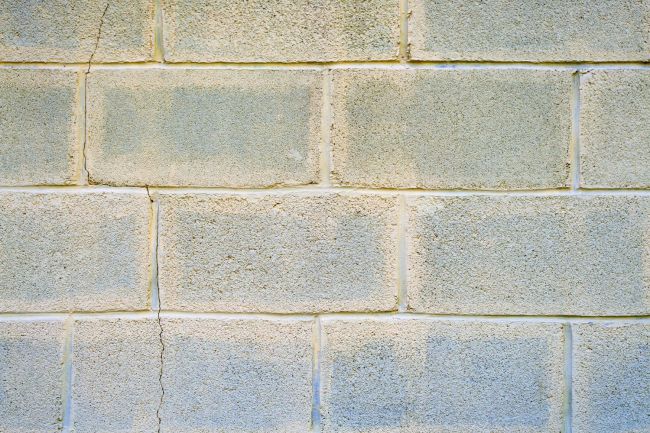
Do I need bowing basement wall repair?
While some home renovation projects certainly aren’t necessary, other projects are essential to keep the home’s occupants safe in a structurally sound house. A bowing basement wall is the latter. While it may not be critical at the first sign of a deflection that measures an inch or so, the risk of further damage warrants attention. In some cases, the wall has bowed or cracked significantly due to a natural disaster, and immediate repair is recommended. There are several signs that homeowners can watch for to determine when to speak with a contractor about bowing basement wall repairs.
Stair-Step or Horizontal Cracks
The most severe type of foundation crack that needs immediate attention is one that looks like a set of stairs or runs horizontally. Brick or block walls often show the stair-step type of cracks when the pressure mounts. These indicate structural damage that could require a full foundation replacement to ensure the house remains secure on the foundation. The source of the damage also needs to be investigated and mitigated if possible to relieve the lateral pressure causing the cracks.
Corner Cracks
If corner cracks are observed around the foundation, it’s likely that the home is settling unevenly in the ground. This causes pressure to exert force on different portions of the foundation, weakening some areas. Cracks on the corners of a foundation are susceptible to being filled with water that will always find the lowest point possible and pool there. Damage from pooling water within a foundation cannot be underestimated, so homeowners are advised to inquire about foundation repair cost as soon as possible.
Bulging or Curving
Walls that are bulging, curving, or bowing are obvious signs of a structural problem. In most cases, water or soil has pushed against the foundation and will continue to do so until a solution is implemented. Bowing basement wall repair can stabilize the walls against further movement, but the joists and other components need to be inspected to determine whether other hidden damage exists. Bowing walls are often just one sign of a foundation problem.
Tilting
Sometimes the entire wall seems to tilt inward. This situation occurs when the pressure of soil (and anything built on it) is greater than the foundation can withstand. A tilting basement wall is an issue that homeowners are encouraged to resolve before more extreme damage happens due to the extra pressure it exerts on the rest of the house.
Leaking
Hydrostatic pressure causes cracks to appear in foundations that aren’t sealed or waterproofed. The water that seeps in can become a regular leak in the foundation, causing mold and wood rot. During the winter, freezing temperatures can cause the ice to expand and crack the foundation further. To ensure the foundation remains sound, leaking foundations need to be repaired as soon as the weather permits. Any of the best basement waterproofing companies, such as Basement Systems and B-Dry, can offer expertise in preventing future leaks.
Bowing Basement Wall Repair: DIY vs. Hiring a Professional
The question many homeowners have is whether they can save a little money when DIYing a basement wall repair that doesn’t seem too severe. Do-it-yourself basement wall bracing might happen in the form of propping up some 2x4s against the wall temporarily for support. There are also a few wall bracing kits on the market.
However, this is one area where the safest solution for the home’s occupants is to leave the repair to the professionals. A secure foundation is a secure home. Unless the homeowner is a contractor who is well versed in foundation repairs, most people won’t know what hidden signs of damage to look for or how to solve them. In many cases, a structural engineer’s expert advice is needed to ensure the solution properly protects the home.
“If you notice cracked or bowing walls in your home, you need a foundation repair expert to look at it right away,” advises Tracy. “Specialized equipment and a tailored engineered solution is the only way to ensure you’re solving the issue. DIY foundation repairs are not long-term solutions and are not recommended.”
Reinforcing a bowing basement wall often requires special equipment and an understanding of physics to ensure the solution is implemented correctly. Excavation could be required for some repair methods, and the project could take several days to complete. The expense of hiring a professional contractor to repair the basement wall is worth the risk of an inexperienced homeowner attempting to repair it on a DIY budget only to have the repair fail down the road.
How to Save Money on Bowing Basement Wall Repair Cost
Homeowners wondering “How much does it cost to repair bowing basement walls?” are also probably curious about ways to save money on the repair. While money-saving options are somewhat limited for a construction project of this magnitude, there are still a few ways to stretch the dollar a little further.
- Identify the problem early. The easiest way to keep bowing basement wall repair costs down is to catch the problem early and get it resolved. It’s much easier and cheaper for a contractor to slap a few reinforcement straps on a slightly bowed wall than to excavate or drill helical tiebacks into the ground—after getting soil testing and structural engineering reports done.
- Obtain multiple quotes. If you’re shopping for a general contractor, it’s always a good idea to get several quotes. The goal is to find the right price at the right value so you can feel confident that the job will be done quickly and securely.
- Refinish the walls yourself. If you’re a savvy DIYer or know someone who is, do the drywall repair and repainting on your own. You’ll still need to pay for materials, but labor will only cost your time. Finishing basement walls on your own is a good way to save a little money.
- Ask about damage prevention methods. Contractors will have an idea of what caused the problem and solutions to prevent it in the future. Combining construction jobs can lower total costs, so don’t hesitate to ask if they can help with sealing, waterproofing, or installing a drainage system at the same time.
- Seal hairline cracks early. If you see small hairline cracks appearing in the foundation, you can delay or stop the progression of further damage by sealing the cracks yourself. Local hardware stores often carry concrete sealants, or ask a concrete professional about their preferred product.
- Ask for multiple repair options. If the wall is not seriously damaged, it’s possible that there could be more than one way to reinforce it. Asking for several repair recommendations can help you find the one that fits your budget and needs.
If cash is not readily available, homeowners might consider obtaining financing for the basement wall repairs. The best home equity loans, such as one from U.S. Bank or Flagstar Bank, typically offer a locked-in rate and can help homeowners pay for home repairs or improvements.
Questions to Ask About Bowing Basement Wall Repair
Issues with foundations can intimidate many homeowners, but with the right questions to ask, they can feel confident about obtaining the right answers. There are several questions homeowners are encouraged to ask during the process of finding the right contractor or structural engineer.
General contractor
- Are you licensed and insured?
- How long have you been in business?
- How many foundations have you repaired?
- Can you provide references?
- What types of repair methods are you experienced with?
- Do you offer a free on-site inspection?
- Will you provide an itemized bill?
- How will you determine if a structural engineer’s expertise is required?
- What if the damage is too severe for reinforcement?
- What will you look for to determine the structural integrity of my foundation?
- What type of repair is best for my bowed basement wall?
- What if there is no property access for the recommended type of repair?
- Do you include the cost of replacement drywall and painting? If so, do you subcontract that job?
- Who will be my main contact during the project?
- Will I need a permit to repair my basement wall? If so, who obtains it?
- How long will it take to repair?
- Is there anything I should do to protect the foundation while you’re working on it?
- Do you seal and waterproof basements? If so, how much would basement waterproofing cost?
- Do you offer any guarantee or warranty on your work?
- How do you require payment for a job like this?
Structural engineer
- Are you licensed and insured?
- How long have you been in business?
- How many foundations have you inspected?
- Can you provide references?
- Do you have any conflicts of interest with the general contractor I’ve hired?
- What will you look for during your inspection?
- Do you provide multiple solutions when possible?
- How long will it take to provide a report?
- Do you submit the report to the city and the general contractor?
- What happens after you submit your report?
FAQs
Bowing basement wall repair costs can become expensive and complicated when the damage is severe. Homeowners likely have lots of questions about bowing walls, the costs to repair, the risks of repair versus replacement, and more. Here are a few additional questions and answers to help guide this important project.
Q. Should you buy a house with bowing walls?
This ultimately comes down to the homeowner’s choice. A bowed wall should be caught during the inspection process, which is why it’s important for a prospective buyer to schedule their own. The home with bowing walls can be purchased, but it may require repair first. Ideally, the seller should be responsible, since they still have possession of the house. The risk of buying a home with a bowing wall is that the damage may be much greater than can be seen during a typical inspection. Still, a savvy house flipper may not be intimidated by a bowed wall if they’re already planning for basement remodeling costs.
Q. How many inches of bowing in a wall is acceptable?
Walls naturally have some flexibility to allow for settling and pressure—usually up to 30 percent of their thickness. However, when visible bowing is seen, the problem needs to be addressed before it extends beyond about 2 inches. If the wall deflects up to 4 inches, more costly repairs are needed. Any more than that and a contractor will likely recommend replacement, since other parts of the foundation are probably under stress and fracturing as well.
Q. Can you fix a bowed basement wall without digging?
Sometimes you can repair a bowed basement wall without digging into your property. This usually happens with walls that are not severely damaged. Reinforcement straps made of carbon fiber or steel can be a great solution that doesn’t require digging—if they’ll be sufficient to brace the wall safely.
